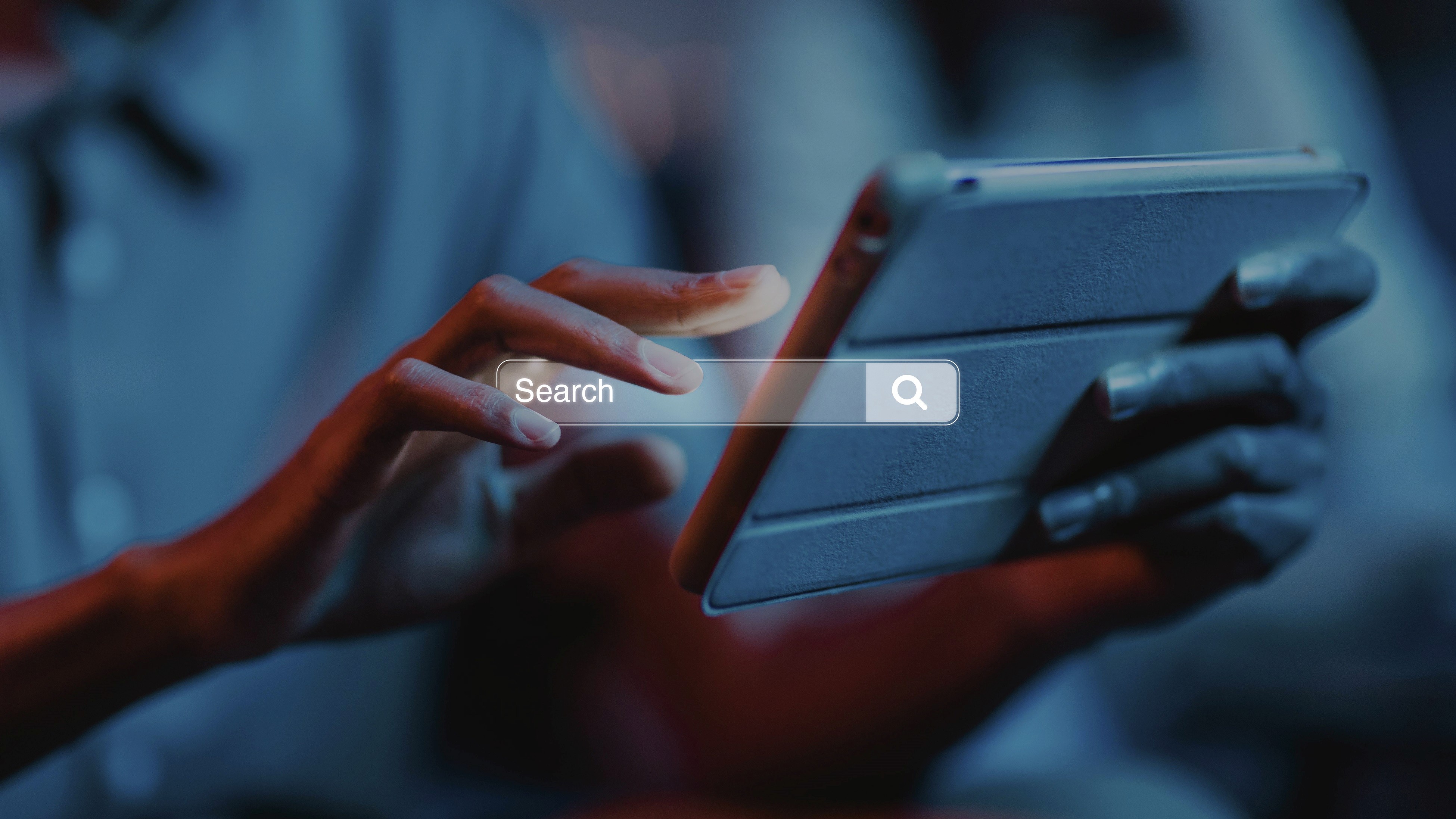
Our Three Step Process
February 7, 2024
Is Influencer Marketing Effective for D2C Brands? Key Insights & Analysis

Our Three Step Process
February 7, 2024
Is Influencer Marketing Effective for D2C Brands? Key Insights & Analysis
In today's digital-first world, Direct-to-Consumer (D2C) brands are constantly looking for innovative ways to build brand awareness, engage audiences, and drive sales. Influencer marketing has emerged as one of the most powerful strategies for achieving these goals. But is influencer marketing truly effective for D2C brands? Let’s dive into key insights and analysis to understand its impact.
The Power of Influencer Marketing for D2C Brands
Influencer marketing is a form of digital marketing that involves collaborating with social media influencers to promote products or services. Here’s why it works so well for D2C brands:
1. Authentic Engagement – Unlike traditional advertisements, influencer marketing builds trust through genuine content. Followers tend to trust influencers’ recommendations, making it easier for D2C brands to establish credibility.
2. Wider Reach – Influencers have built-in audiences that D2C brands can tap into instantly, increasing their brand visibility.
3. Higher Conversion Rates – Studies show that influencer marketing can generate ROI that rivals or even surpasses traditional advertising. According to a recent survey, businesses earn $5.20 for every $1 spent on influencer marketing.
4. Cost-Effective Advertising – Compared to large-scale advertising campaigns, influencer marketing is often more affordable and can be tailored to fit different budgets.
5. SEO and Social Proof – Influencer-generated content can boost brand SEO, increasing organic visibility on search engines while providing valuable social proof.
How D2C Brands Can Maximize Influencer Marketing
While influencer marketing is effective, a well-planned strategy is crucial for maximizing its potential. Here are key steps D2C brands should take:
1. Identify the Right Influencers
Choosing the right influencer is vital. Brands should look beyond follower count and focus on the following:
· Relevance – Does the influencer’s niche align with your brand?
· Engagement Rate – Are their followers actively engaging with their content?
· Authenticity – Does the influencer genuinely use and trust the product?
2. Focus on Micro-Influencers
Micro-influencers (those with 10,000 to 100,000 followers) often have higher engagement rates than celebrities. They offer:
· Better audience trust
· More targeted reach
· Cost-effective collaboration
3. Create Authentic and Engaging Content
Influencer marketing should feel natural, not forced. Content that resonates with audiences includes:
· Honest reviews
· Behind-the-scenes usage
· Tutorials and demonstrations
4. Leverage Multiple Platforms
Instead of focusing on just Instagram, consider expanding to platforms like TikTok, YouTube, and LinkedIn (for B2B-focused D2C brands). Each platform has a unique audience and engagement style.
5. Track Performance Metrics
Analysing campaign performance is essential to determine ROI. Key metrics to track include:
· Engagement rate (likes, comments, shares)
· Click-through rate (CTR)
· Conversion rate
· Cost per acquisition (CPA)
Case Studies: D2C Brands Winning with Influencer Marketing
1. Glossier
The beauty brand Glossier leveraged micro-influencers and everyday consumers to build its brand. By encouraging user-generated content and featuring real customer testimonials, Glossier became a cult favourite.
2. Gymshark
Gymshark collaborated with fitness influencers to create a strong community-driven brand. The brand’s influencer marketing campaigns helped it grow into a multi-million-dollar business.
3. HelloFresh
The meal-kit service used influencer partnerships across YouTube and Instagram to drive awareness and sales, making it one of the most recognized D2C food brands today.
Challenges and How to Overcome Them
Despite its benefits, influencer marketing has challenges. Here’s how to address them:
1. Fake Influencers & Bots – Always verify engagement rates and authenticity before collaborating.
2. High Costs for Top Influencers – Work with micro-influencers or consider performance-based partnerships.
3. Regulatory Compliance – Ensure all influencer promotions comply with advertising guidelines and disclose paid partnerships.
Conclusion
Influencer marketing is a powerful tool for D2C brands looking to boost brand awareness, build trust, and drive sales. By choosing the right influencers, crafting engaging content, and tracking key performance metrics, brands can maximize their return on investment.
Ready to leverage influencer marketing for your D2C brand? Contact us today to create a winning strategy and start growing your business with the power of authentic influencer partnerships!
The Power of Influencer Marketing for D2C Brands
Influencer marketing is a form of digital marketing that involves collaborating with social media influencers to promote products or services. Here’s why it works so well for D2C brands:
1. Authentic Engagement – Unlike traditional advertisements, influencer marketing builds trust through genuine content. Followers tend to trust influencers’ recommendations, making it easier for D2C brands to establish credibility.
2. Wider Reach – Influencers have built-in audiences that D2C brands can tap into instantly, increasing their brand visibility.
3. Higher Conversion Rates – Studies show that influencer marketing can generate ROI that rivals or even surpasses traditional advertising. According to a recent survey, businesses earn $5.20 for every $1 spent on influencer marketing.
4. Cost-Effective Advertising – Compared to large-scale advertising campaigns, influencer marketing is often more affordable and can be tailored to fit different budgets.
5. SEO and Social Proof – Influencer-generated content can boost brand SEO, increasing organic visibility on search engines while providing valuable social proof.
How D2C Brands Can Maximize Influencer Marketing
While influencer marketing is effective, a well-planned strategy is crucial for maximizing its potential. Here are key steps D2C brands should take:
1. Identify the Right Influencers
Choosing the right influencer is vital. Brands should look beyond follower count and focus on the following:
· Relevance – Does the influencer’s niche align with your brand?
· Engagement Rate – Are their followers actively engaging with their content?
· Authenticity – Does the influencer genuinely use and trust the product?
2. Focus on Micro-Influencers
Micro-influencers (those with 10,000 to 100,000 followers) often have higher engagement rates than celebrities. They offer:
· Better audience trust
· More targeted reach
· Cost-effective collaboration
3. Create Authentic and Engaging Content
Influencer marketing should feel natural, not forced. Content that resonates with audiences includes:
· Honest reviews
· Behind-the-scenes usage
· Tutorials and demonstrations
4. Leverage Multiple Platforms
Instead of focusing on just Instagram, consider expanding to platforms like TikTok, YouTube, and LinkedIn (for B2B-focused D2C brands). Each platform has a unique audience and engagement style.
5. Track Performance Metrics
Analysing campaign performance is essential to determine ROI. Key metrics to track include:
· Engagement rate (likes, comments, shares)
· Click-through rate (CTR)
· Conversion rate
· Cost per acquisition (CPA)
Case Studies: D2C Brands Winning with Influencer Marketing
1. Glossier
The beauty brand Glossier leveraged micro-influencers and everyday consumers to build its brand. By encouraging user-generated content and featuring real customer testimonials, Glossier became a cult favourite.
2. Gymshark
Gymshark collaborated with fitness influencers to create a strong community-driven brand. The brand’s influencer marketing campaigns helped it grow into a multi-million-dollar business.
3. HelloFresh
The meal-kit service used influencer partnerships across YouTube and Instagram to drive awareness and sales, making it one of the most recognized D2C food brands today.
Challenges and How to Overcome Them
Despite its benefits, influencer marketing has challenges. Here’s how to address them:
1. Fake Influencers & Bots – Always verify engagement rates and authenticity before collaborating.
2. High Costs for Top Influencers – Work with micro-influencers or consider performance-based partnerships.
3. Regulatory Compliance – Ensure all influencer promotions comply with advertising guidelines and disclose paid partnerships.
Conclusion
Influencer marketing is a powerful tool for D2C brands looking to boost brand awareness, build trust, and drive sales. By choosing the right influencers, crafting engaging content, and tracking key performance metrics, brands can maximize their return on investment.
Ready to leverage influencer marketing for your D2C brand? Contact us today to create a winning strategy and start growing your business with the power of authentic influencer partnerships!




In today's digital-first world, Direct-to-Consumer (D2C) brands are constantly looking for innovative ways to build brand awareness, engage audiences, and drive sales. Influencer marketing has emerged as one of the most powerful strategies for achieving these goals. But is influencer marketing truly effective for D2C brands? Let’s dive into key insights and analysis to understand its impact.
The Power of Influencer Marketing for D2C Brands
Influencer marketing is a form of digital marketing that involves collaborating with social media influencers to promote products or services. Here’s why it works so well for D2C brands:
1. Authentic Engagement – Unlike traditional advertisements, influencer marketing builds trust through genuine content. Followers tend to trust influencers’ recommendations, making it easier for D2C brands to establish credibility.
2. Wider Reach – Influencers have built-in audiences that D2C brands can tap into instantly, increasing their brand visibility.
3. Higher Conversion Rates – Studies show that influencer marketing can generate ROI that rivals or even surpasses traditional advertising. According to a recent survey, businesses earn $5.20 for every $1 spent on influencer marketing.
4. Cost-Effective Advertising – Compared to large-scale advertising campaigns, influencer marketing is often more affordable and can be tailored to fit different budgets.
5. SEO and Social Proof – Influencer-generated content can boost brand SEO, increasing organic visibility on search engines while providing valuable social proof.
How D2C Brands Can Maximize Influencer Marketing
While influencer marketing is effective, a well-planned strategy is crucial for maximizing its potential. Here are key steps D2C brands should take:
1. Identify the Right Influencers
Choosing the right influencer is vital. Brands should look beyond follower count and focus on the following:
· Relevance – Does the influencer’s niche align with your brand?
· Engagement Rate – Are their followers actively engaging with their content?
· Authenticity – Does the influencer genuinely use and trust the product?
2. Focus on Micro-Influencers
Micro-influencers (those with 10,000 to 100,000 followers) often have higher engagement rates than celebrities. They offer:
· Better audience trust
· More targeted reach
· Cost-effective collaboration
3. Create Authentic and Engaging Content
Influencer marketing should feel natural, not forced. Content that resonates with audiences includes:
· Honest reviews
· Behind-the-scenes usage
· Tutorials and demonstrations
4. Leverage Multiple Platforms
Instead of focusing on just Instagram, consider expanding to platforms like TikTok, YouTube, and LinkedIn (for B2B-focused D2C brands). Each platform has a unique audience and engagement style.
5. Track Performance Metrics
Analysing campaign performance is essential to determine ROI. Key metrics to track include:
· Engagement rate (likes, comments, shares)
· Click-through rate (CTR)
· Conversion rate
· Cost per acquisition (CPA)
Case Studies: D2C Brands Winning with Influencer Marketing
1. Glossier
The beauty brand Glossier leveraged micro-influencers and everyday consumers to build its brand. By encouraging user-generated content and featuring real customer testimonials, Glossier became a cult favourite.
2. Gymshark
Gymshark collaborated with fitness influencers to create a strong community-driven brand. The brand’s influencer marketing campaigns helped it grow into a multi-million-dollar business.
3. HelloFresh
The meal-kit service used influencer partnerships across YouTube and Instagram to drive awareness and sales, making it one of the most recognized D2C food brands today.
Challenges and How to Overcome Them
Despite its benefits, influencer marketing has challenges. Here’s how to address them:
1. Fake Influencers & Bots – Always verify engagement rates and authenticity before collaborating.
2. High Costs for Top Influencers – Work with micro-influencers or consider performance-based partnerships.
3. Regulatory Compliance – Ensure all influencer promotions comply with advertising guidelines and disclose paid partnerships.
Conclusion
Influencer marketing is a powerful tool for D2C brands looking to boost brand awareness, build trust, and drive sales. By choosing the right influencers, crafting engaging content, and tracking key performance metrics, brands can maximize their return on investment.
Ready to leverage influencer marketing for your D2C brand? Contact us today to create a winning strategy and start growing your business with the power of authentic influencer partnerships!




Other Blogs
Other Blogs
Check our other project Blogs with useful insight and information for your businesses
Other Blogs
Other Blogs
Check our other project Blogs with useful insight and information for your businesses
Other Blogs
Other Blogs
Check our other project Blogs with useful insight and information for your businesses


